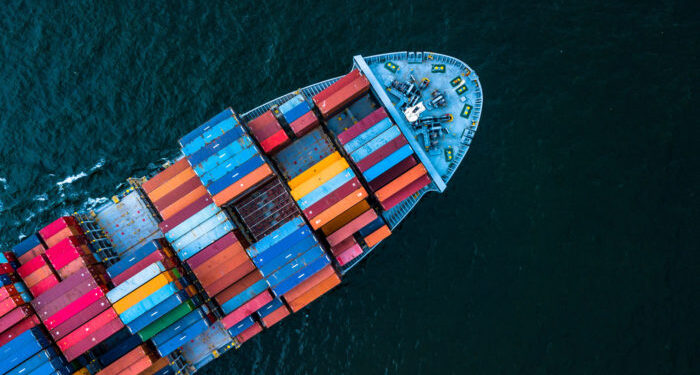Australian Maritime Safety Authority (AMSA) recently published a Safety Awareness Bulletin, focusing on the risks of losing shipping containers at sea.
To remind, on average, about 1500 containers are lost at sea each year world-wide. As stated in the Allianz Safety and Shipping Review back in 2019: “Although it not uncommon for containers to be lost at sea, the risks posed by heavy weather, inadequate stowing and lashing and even environmental concerns means this issue is a growing concern”.
Therefore, AMSA highlights how container loss affects the environment and what measures should be taken in order to prevent such incidents from happening.
According to the report:
Container loss often leads to vessel structural damage, significant harm to the ocean and coastal environments, as well as posing a significant risk to other vessels and fishing operations in the vicinity. Such incidents cause reputational damage to the shipping industry and can also cost tens of millions of dollars to clean up.
Among others, the authority notes case studies, AMSA incident and inpection data, and strategies to prevent container loss.

As explained, during 2020, AMSA conducted an inspection campaign focusing on the stowage of containers. During this campaign, 208 ships were inspected. Namely, of the majority of ships inspected, twist locks and base locks had been correctly positioned, and the fixed cargo securing equipment was in good condition.
In light of the above, AMSA provides the following practical strategies for improving container securing and preventing container loss.
Strategies to prevent container loss
- Monitoring and maintaining cargo securing arrangements:
It is essential that cargo securing equipment and fittings are regularly inspected and maintained. Ship operators should establish maintenance schedules that ensure that necessary inspections and maintenance takes place and is recorded.
These, inspection, monitoring and maintenance processes and procedures should be regularly reviewed for continued effectiveness.
The ship’s crew need to monitor cargo securing arrangements throughout the voyage, to ensure that lashing arrangements have not become loose.
- Procedures and training:
Operators should provide training to ensure crew are familiar with the approved cargo securing manual, in accordance with their specific roles on board.
The approved cargo securing manual should be comprehensive and understandable, as poorly written procedures will likely result in deviation from procedures or non-compliance. It is important to align the manual with the way tasks are actually done (both safely and practically). Operators should regularly review the cargo operations procedures to ensure they are up-todate, and followed.
Ship’s crews need to be able to implement the requirements of the approved cargo securing manual appropriately. This includes ensuring restrictions such as maximum stack weights and weight distribution within stacks is known and complied with.
- Preparing for heavy weather:
Containers must be stowed and secured for the most severe weather conditions which may be expected for the intended voyage. Actions to increase lashings should also be considered before conditions deteriorate to the point that they are required.
While the safety management system will contain procedures relating to heavy weather, early avoidance is better than sailing through heavy weather. Effective weather routing procedures should be in place. The master should always consult the latest available weather information and operators should ensure that the master always has access to this information.
However, in many cases ships’ crews struggled to demonstrate the necessary understanding of the approved cargo securing manual to ensure that cargo was properly stowed and secured.
Key points:
- The ship’s crew must be familiar with the approved cargo securing manual.
- Containers must be stowed and secured in accordance with the approved cargo securing manual and the crew should check this before signing off on cargo load.
- Consideration should be given to adding to the lashing arrangements when severe weather is expected.
- Effective weather routing, based on the latest available weather information, should be undertaken.
- Cargo securing equipment and fittings should be regularly inspected and maintained.
Speaking of container losses, Steamship Mutual recently issued a risk alert focusing on issues associated with cargo stowage and securing.




























































